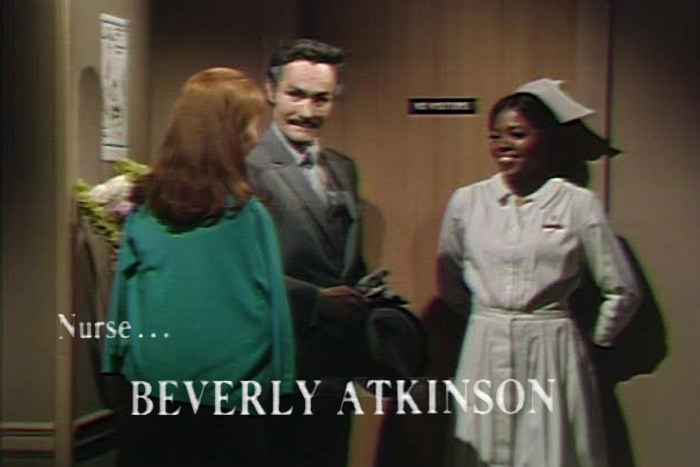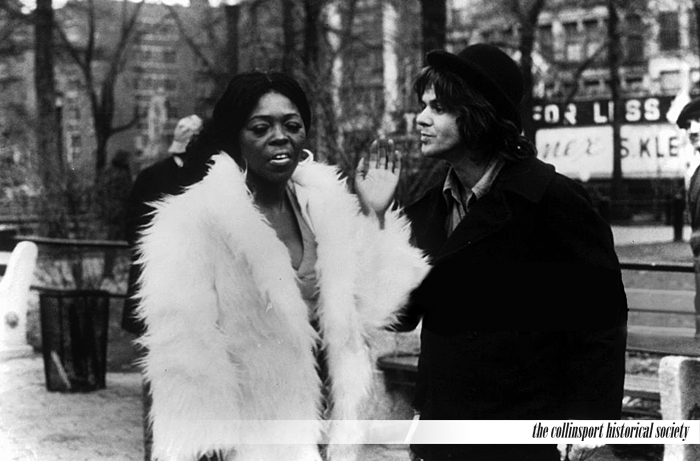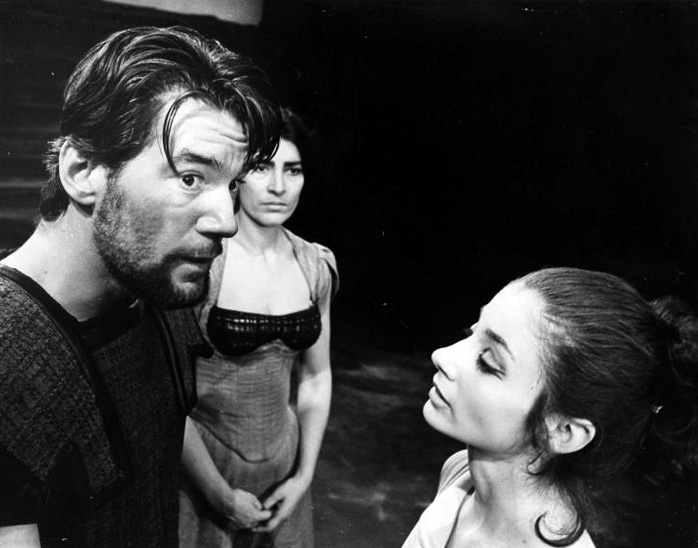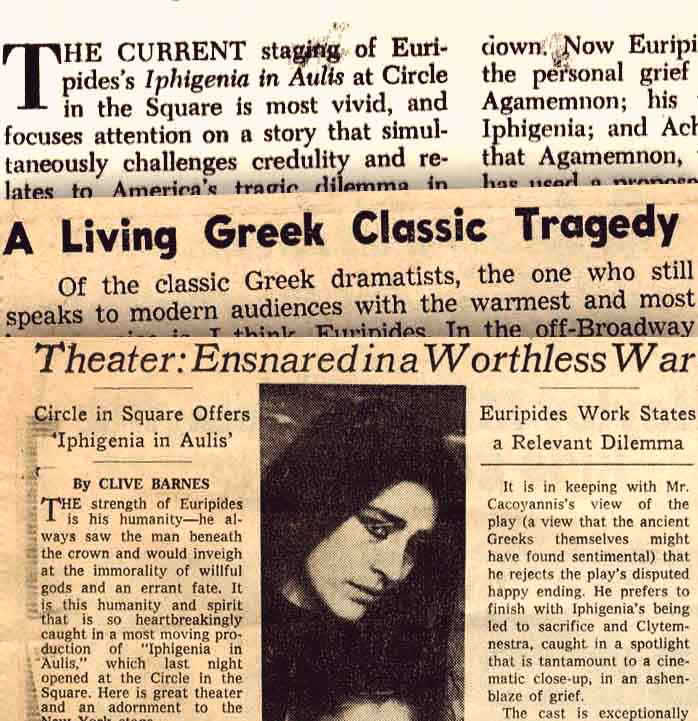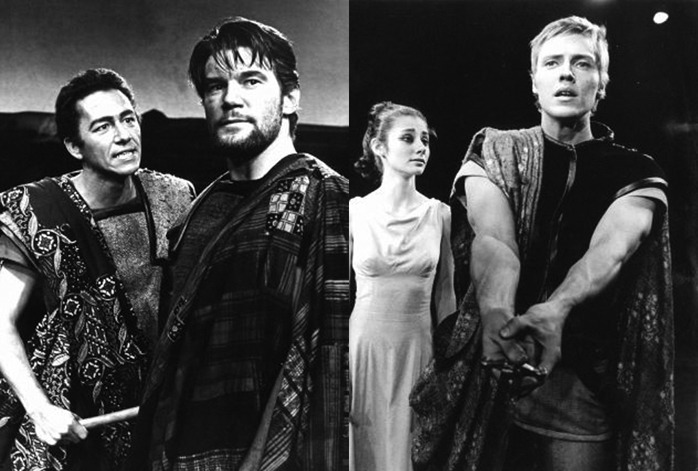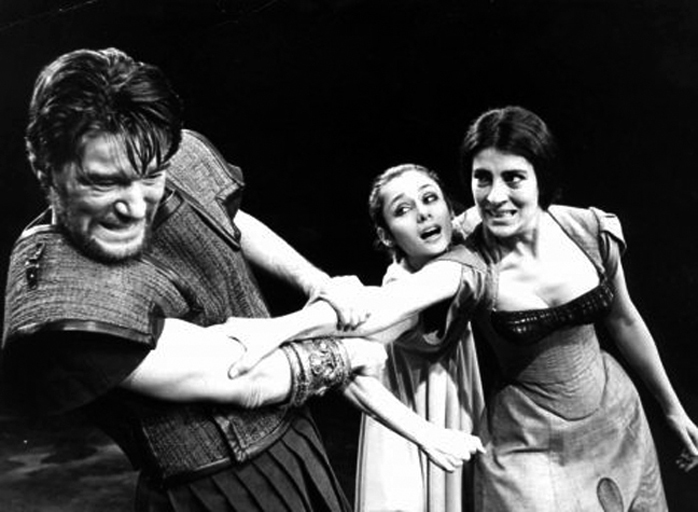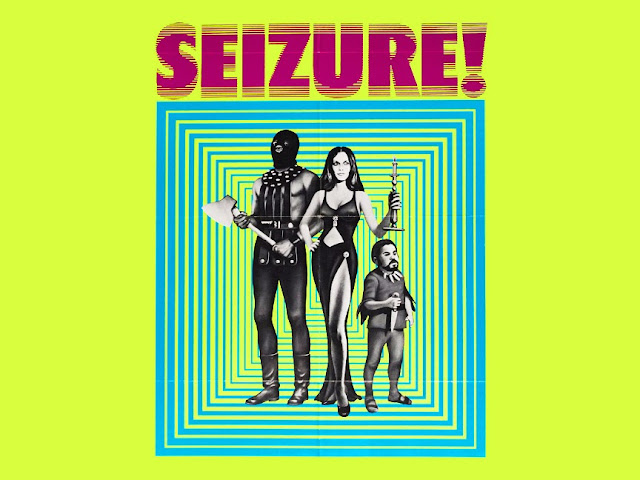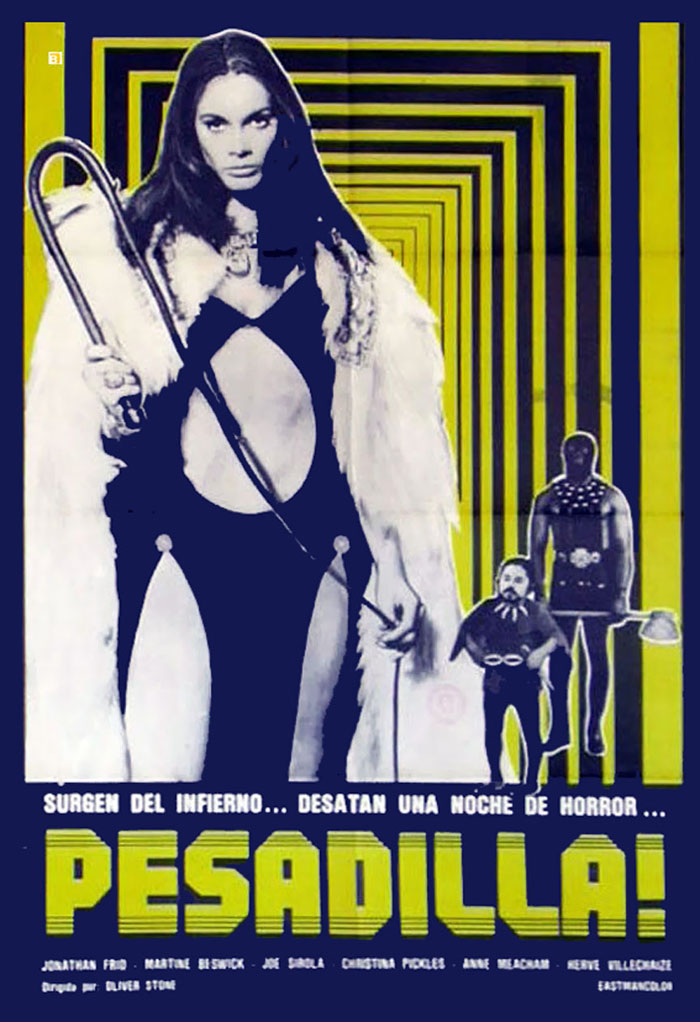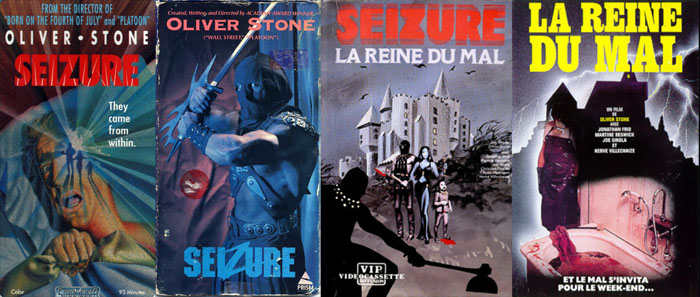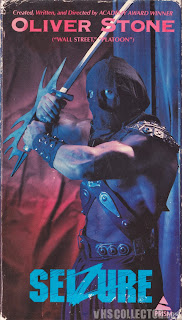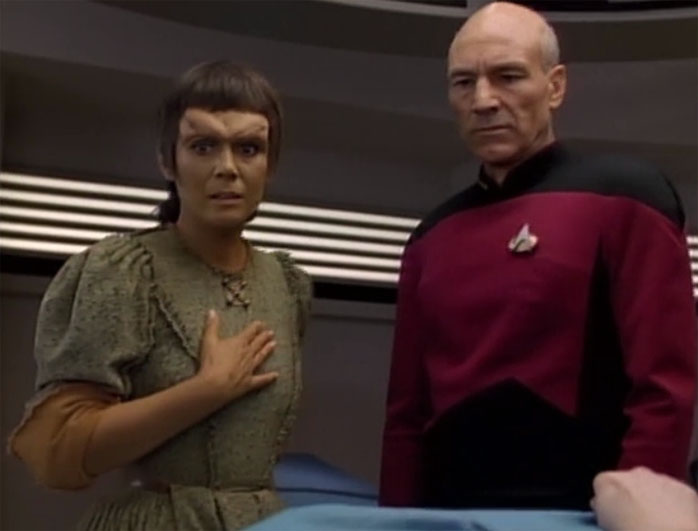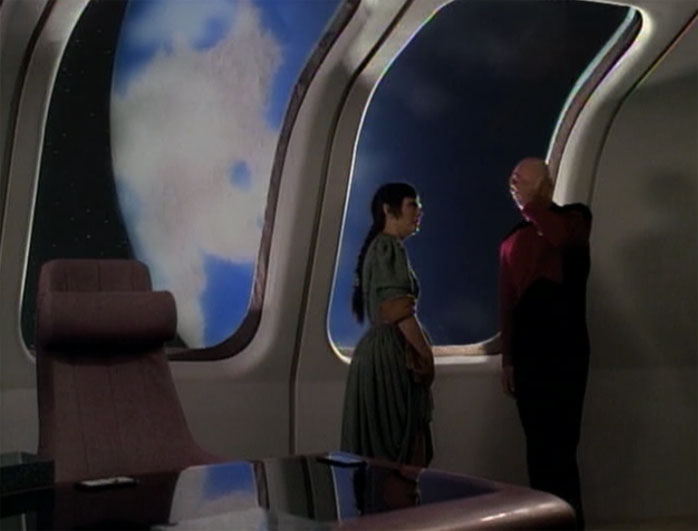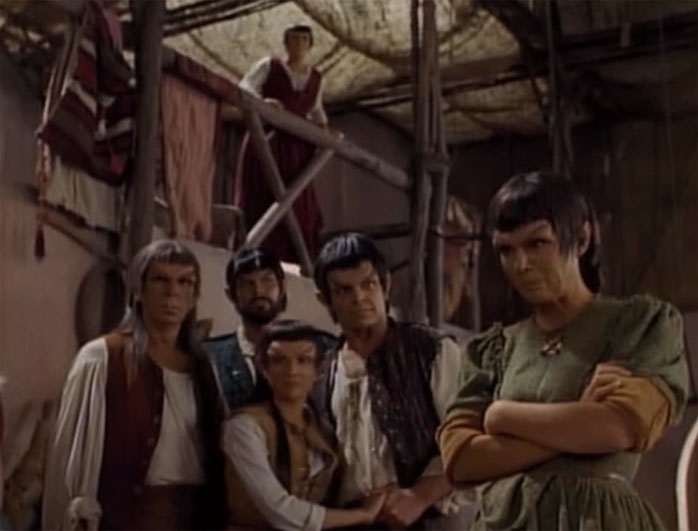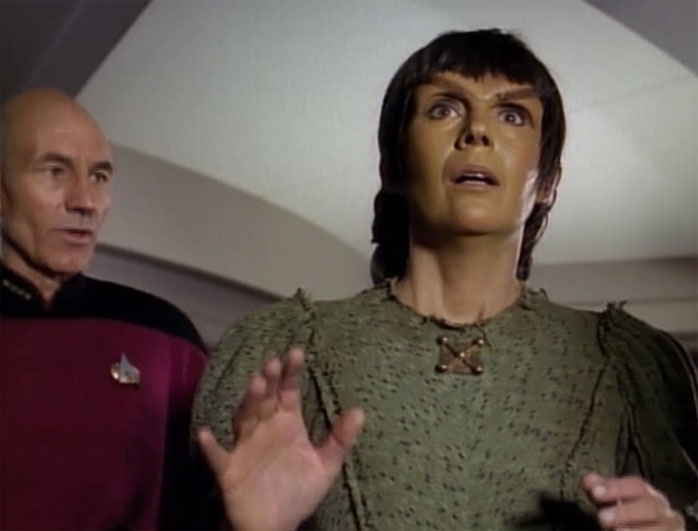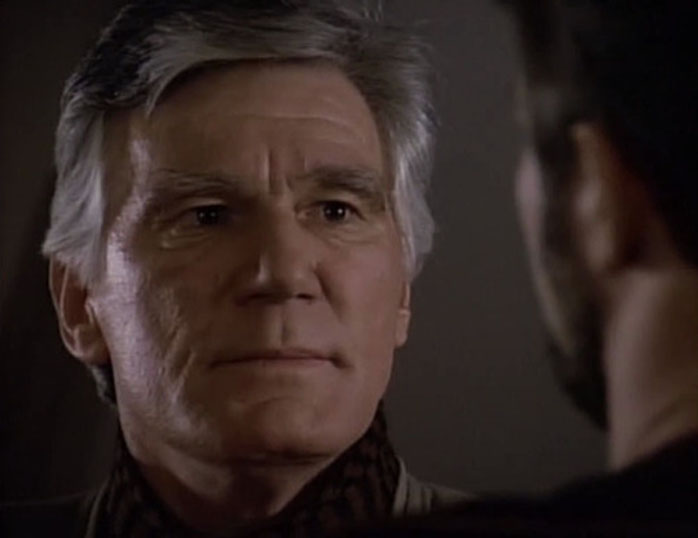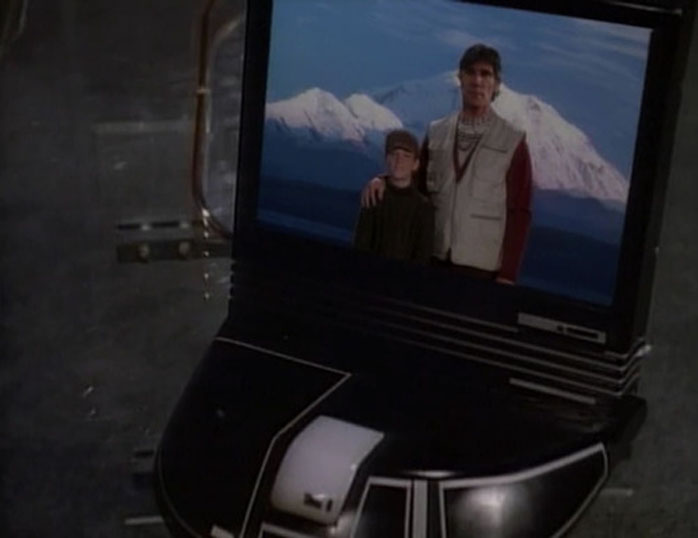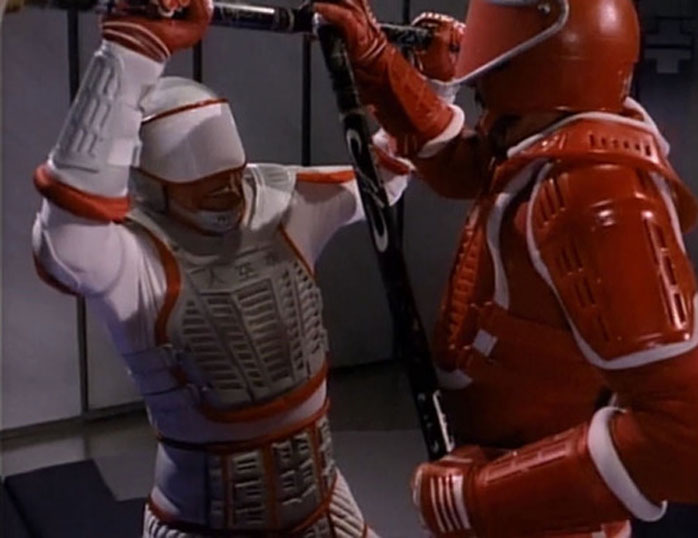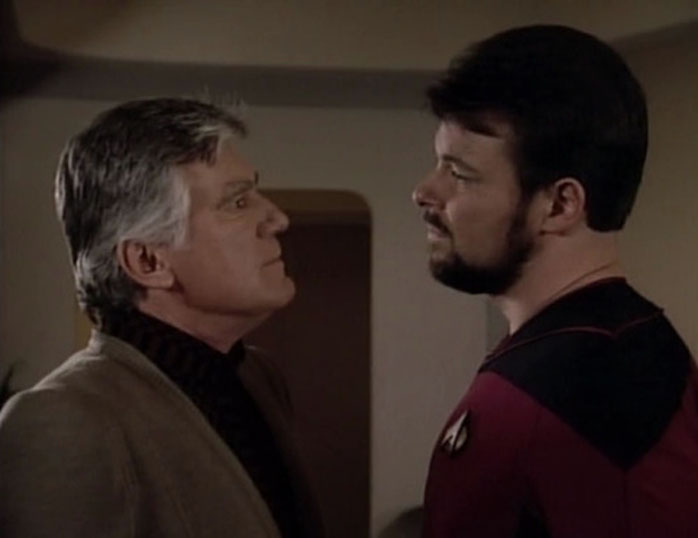UPDATE: I asked Oliver Stone about his feelings on the film,
and got the following answer ...
By WALLACE McBRIDE
There are no heroes in
SEIZURE, the 1974 directorial debut of Oliver Stone. The film has great fun in pretending that leading man Jonathan Frid is the film’s protagonist, which he might be, if only by default. But it’s an ugly, nihilistic film about humanity’s many shades of cowardice. Had it been a better film, its dense, cryptic rhythms might have attracted the kinds of conspiracy theorists that so love
Stanley Kubrick’s THE SHINING. As it stands, the film is just a minor curiosity.
Frid plays successful novelist Edmund Blackstone, who is entertaining a motley group of friends at his lake house for a weekend. Without exception, these are all horrible human beings, with Frid presented as a quiet everyman. Haunted by a recurring nightmare, Blackstone puts on a brave face for his wife and child and does his best to entertain this group of A-holes. The festivities come to a halt when a trio of violent party crashers arrives on the scene: The Spider, The Jackal and The Queen of Evil. Looking like the backup band for Alice Cooper, this supergroup of psychological archetypes forces the party guests to compete against each other in a host of mundane blood sports, with the loser of each activity forfeiting their life.
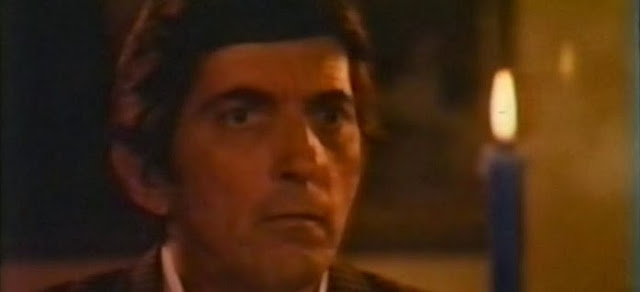
The group of “friends” turn on each other within minutes, to the surprise of nobody. For a while, Frid’s family seems to be immune from this behavior, until a shocking turn of events near the movie’s climax. Rather than face the inevitable, Blackstone’s wife (played by future
Eternian sorceress Christina Pickles) commits suicide. As the number of guests begins to dwindle, Blackstone comes to the conclusion that his own life is worth more to him than his own son’s and sells the lad out. The movie is an experiment in trolling the audience, and will probably leave you feeling vaguely dirty afterward.
Part of
SEIZURE’s problem is its opaque plot. I’m not entirely sure what the movie is really about … these monsters seem to have sprung from Blackstone’s imagination, but we’re not given any clues as to why until moments before the credits roll. Even then, the explanation is a cop-out. The movie is so intentionally cryptic that there might be a great many things buried in the script that could illuminate matters, if you were inclined to dig deeper. Then again, Stone is a well-known fan of hallucinogenic drugs, so who the hell knows what his motivations were.
SEIZURE is not a great movie. It’s not even a good movie, but the stock value of its many creative curiosities has soared since its brief theatrical release more than 40 years ago. At the top of that list is, arguably, the film’s status as Oliver Stone’s first feature film. Stone would go on to become a much better filmmaker, and complete his career arc by again becoming a terrible filmmaker. Fans of
PLATOON will see little of Stone’s presence in SEIZURE. Fans of
NATURAL BORN KILLERS, on the other hand, will see his fingerprints all over it. (It’s worth noting that I quite like NBK, despite its many, many self-indulgent failings.)
SEIZURE’s cast is a lot more intriguing. Today, it’s best known as the film that broke Jonathan Frid. He had a love-hate relationship with acting for many years, and was preparing to quit the business entirely when he was convinced to take the role of Barnabas Collins on DARK SHADOWS in 1967. He had no particular fondness for horror and even less patience for crap, and SEIZURE proved to be one disappointing experience too many. He wouldn’t appear on screen again until 2012, i
n a too-brief walk-on role in Tim Burton’s DARK SHADOWS film.
SEIZURE is a film so terribly miscast that I have to believe its few functional decisions are just happy accidents. The only actors who come out of this movie unscathed are
Mary Woronov and Hervé Villechaiz, who nail their every scene. Frid is less fortunate because of the bizarre decision to cast him as wallflower. He had a magnetic stage presence that sometimes worked against him, and was an ill fit for a role probably written with someone like Dustin Hoffman in mind. Frid’s performance in SEIZURE works sporadically, due to a script that purposefully seeks to obscure the true nature of his character. The movie intentionally gives Frid little to work with until the final act. His best moments in the film are his quiet moments, when he's not weighed down by clunky dialogue.
For all purposes,
SEIZURE is a “lost” film, existing only today as a DVD ripped from an early VHS release. It’s likely to maintain its orphan status forever, because there’s no crass motivation to rescue it from obscurity. Just about everybody involved with the film has disowned it, and its legal rights are even in dispute, thanks to some shady business dealings involving the producers. This means that future audiences will experience the film under dreadful conditions. I suspect the DVD currently available for sale on Amazon is an illegal bootleg (not that anybody cares,) but the picture transfer is shoddy, and the soundtrack is no better. SEIZURE's legacy hasn't even been given the benefit of a fighting chance. Meanwhile, you can
HOWARD THE DUCK on DVD, complete with special features and 5.1 surround sound, a fact that should shake your faith in whatever god you pray to.
If you’re a fan of anybody involved with the film, SEIZURE is still worth searching out. It’s got the kind of creepy, stoner vibe seen not often seen in American horror films, and is so bizarre and original as to be almost refreshing. It’s not a movie you’re going to fall in love with, but is fine for an afternoon dalliance.
(NOTE: SEIZURE is a film I've been avoiding since first spotting it on video store shelves back in the 1980s. The cover art was typical of small-release horror films during the golden age of VHS: A photograph of a hooded, leather-clad executioner that would have more at home on the cover of a Molly Hatchet record than a horror movie.
This "art" was a giant red flag. Independent video companies had no qualms when it came to bilking customers out of their movie, and frequently used misleading artwork (sometimes even changing the name of the film on packaging) in order to move units.
Besides, I
liked Jonathan Frid. At that point, I hadn’t seen much
DARK SHADOWS, but had concerns that SEIZURE was his
PLAN 9 FROM OUTER SPACE and had no interest in playing spectator to his professional decline. Those concerns have never really gone away. Since the ‘80s, I’ve seen DARK SHADOWS twice from start to finish, have become fairly familiar with Frid’s obscure stage credits, and have poured over hours of audio and video of his one-man shows. This past Halloween, I finally pulled the trigger and watched SEIZURE.)
